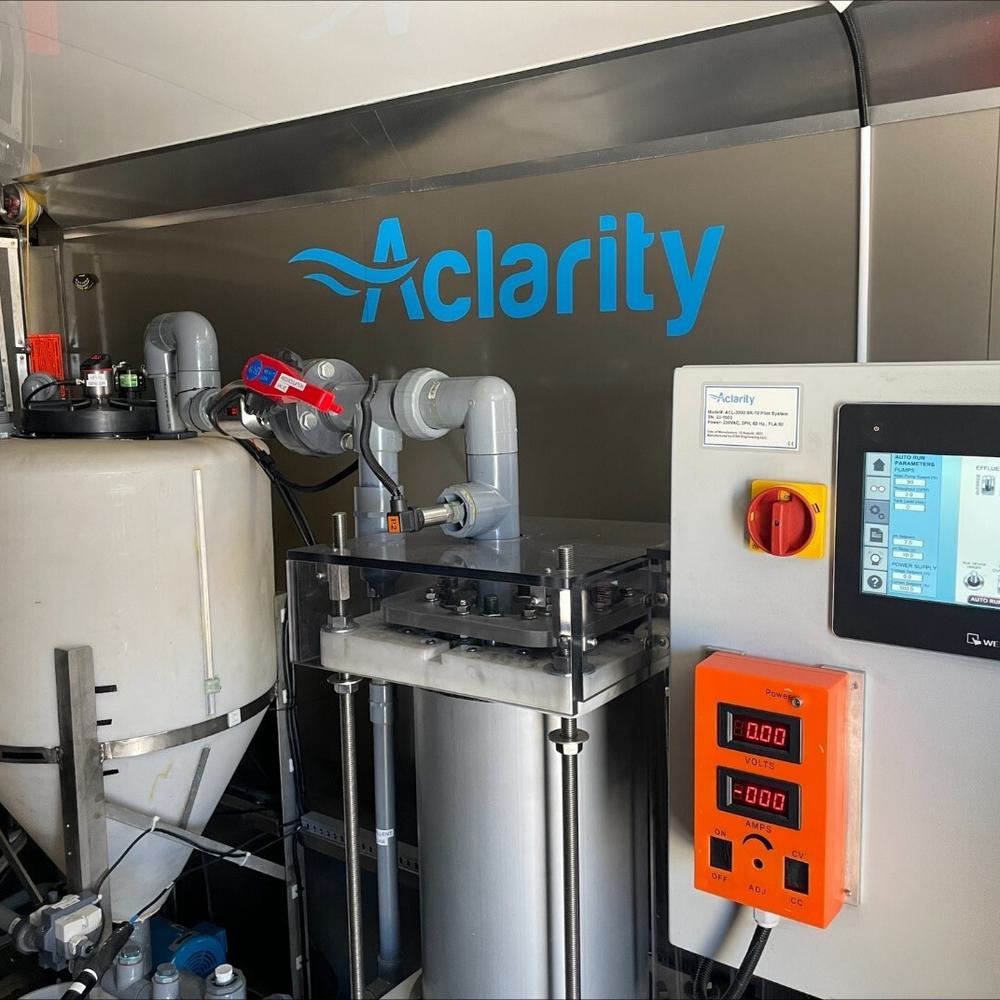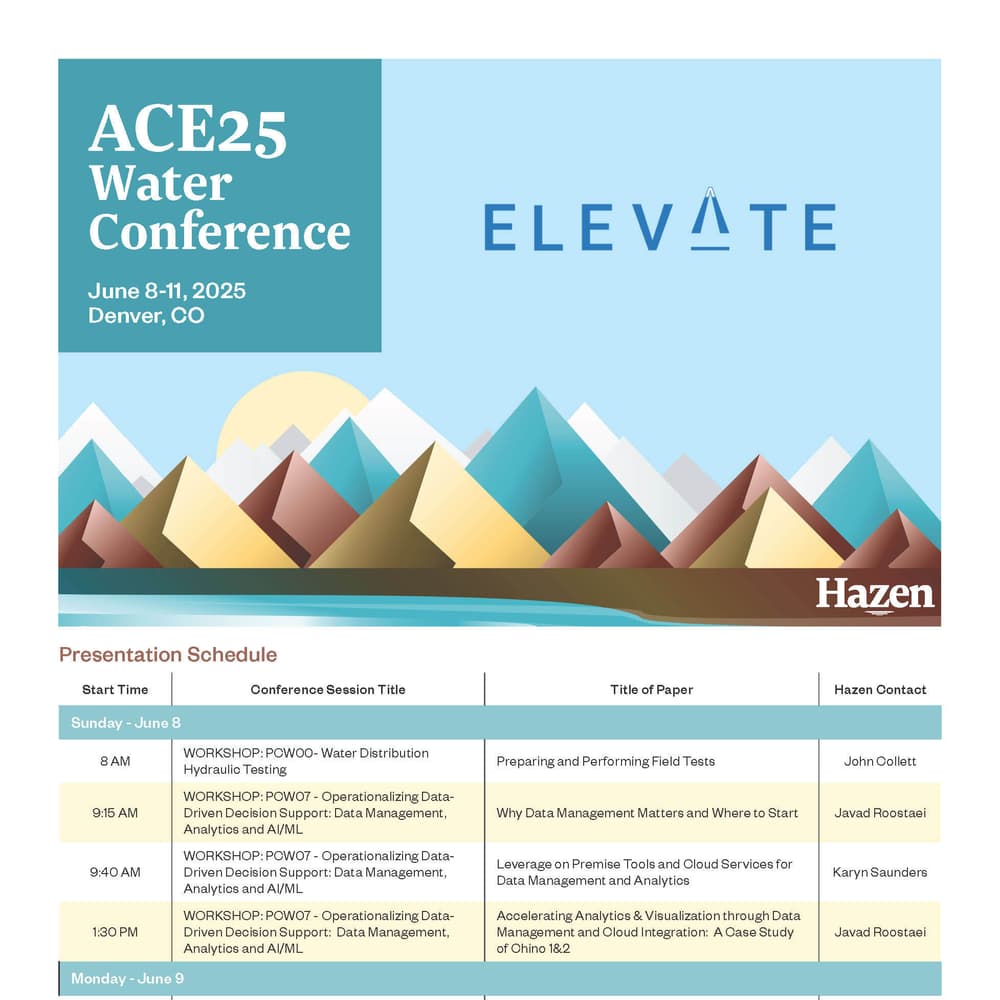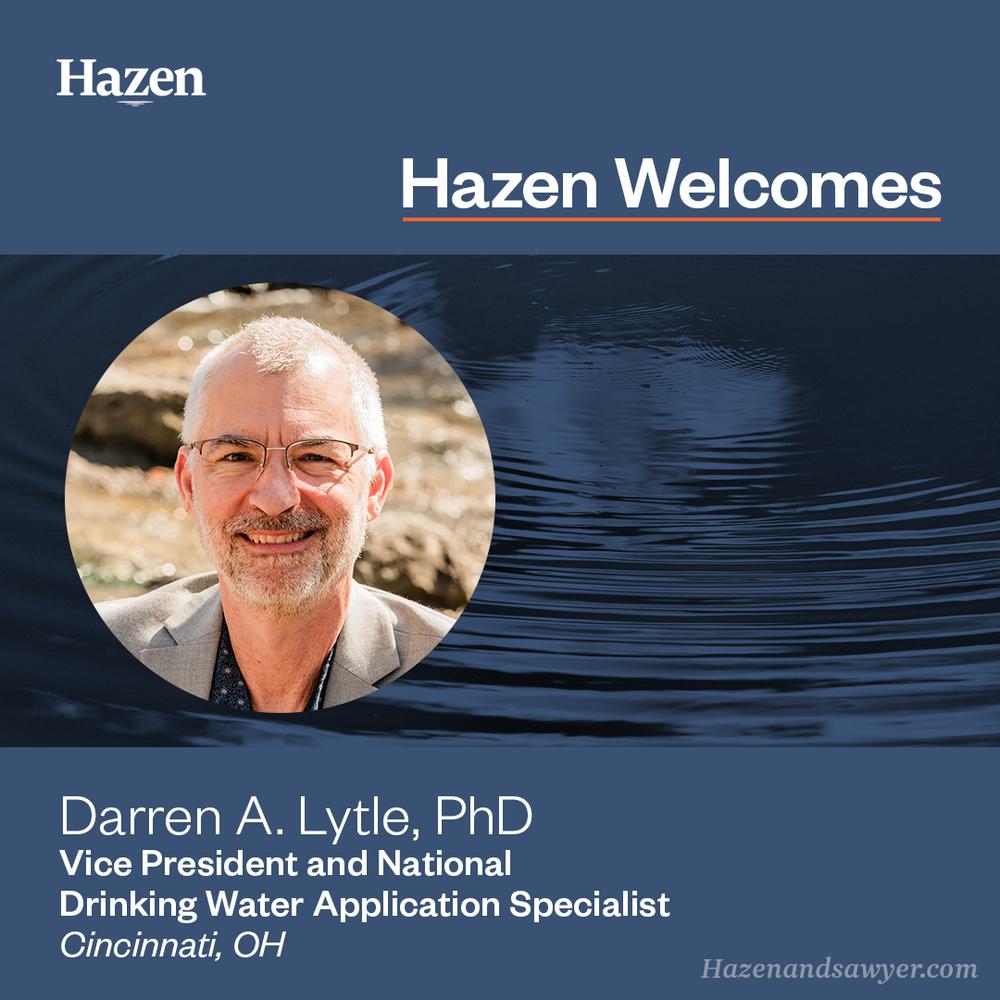Catskill Turbidity Control Study
As part of an overall program to upgrade New York City’s West-of-Hudson water supply facilities, Hazen and Sawyer (in joint venture) conducted a study of alternatives to reduce turbidity in the 600-mgd Catskill supply system after extreme storm events.

Turbidity - and temperature - are also important concerns in the Esopus Creek, a Class A trout stream that conveys water between two of the Catskill system reservoirs. Successful completion of the project required rigorous and transparent modeling to strike a balance between NYC water supply reliability and drinking water quality objectives and the concerns of regulatory agencies and environmental stakeholders.

Turbidity control alternatives evaluated in the study included alternative reservoir system balancing/operating strategies designed to improve turbidity and temperature control, plus a wide array of structural alternatives (e.g. multi-level intakes, inflatable crest gates, baffle curtains, high capacity release structures, aqueduct improvements).
A critical challenge to overcome in the study was development of a modeling tool capable of capturing the feedback between how the system is operated and reservoir water quality. Today’s water quality affects today’s diversions, which in turn affect the quality of water available for withdrawal tomorrow. A robust evaluation of the long-term performance of alternatives must capture this feedback.


To overcome this challenge, Hazen and Sawyer teamed with HydroLogics and the Upstate Freshwater Institute to develop a state-of-the-art linked water supply-water quality model that allowed daily reservoir diversions to be conditioned on water quality:
- The water supply model (OASIS) simulates operation of the entire NYC Reservoir System and the Delaware River Basin. The OASIS model runs on a daily timestep over a 60-year period of record to provide a reasonable representation of the range of meteorological and hydrologic conditions (e.g. droughts, storms) that could be expected to occur in the future.
- The water quality models for the Catskill System reservoirs were based on the Army Corps’ CE-QUAL-W2 (W2) hydrothermal/ transport model, customized (Upstate Freshwater Institute, Syracuse, NY) to provide explicit simulation of the fate and transport of turbidity within each reservoir, including settling and resuspension processes. The W2 models were supported by detailed process studies and extensive, temporally and spatially detailed, in-reservoir automated and event-based water quality monitoring.
- On each simulation day, the W2 models tell OASIS the turbidity of water available for withdrawal, and OASIS makes diversion and release decisions at each reservoir based on in-reservoir turbidity levels, system demand level, reservoir release requirements, and storage balancing throughout the system. These daily decisions in turn affect the following day’s water quality, thereby providing a dynamic simulation of reservoir operations within the context of system-wide water supply needs and constraints.
The linked OASIS-W2 model developed by the team provided a powerful framework for conducting a rigorous long-term performance evaluation of structural and operational turbidity control alternatives under realistic forcing conditions. This tool, combined with detailed engineering and cost evaluations, provided a sound basis for NYCDEP decision-making in the face of substantial regulatory and public scrutiny. The study demonstrated that while a number of costly engineering alternatives could potentially improve Catskill turbidity control, NYCDEP can achieve equal or greater benefits to reduce turbidity, reduce alum treatment, and improve aquatic habitat by optimizing reservoir operations and existing infrastructure.

The Hazen and Sawyer team was subsequently retained by NYCDEP to develop an Operations Support Tool (OST) to support implementation of the proposed modified reservoir system operations. This tool links the OASIS-W2 model with an array of near real-time water quality and hydrologic data and system information. The OST will be driven by conditional forecasts of reservoir inflows, and will run Position Analysis simulations for multiple hydrologic traces to project the impact of today’s operational decisions on short-term water quality and long-term supply reliability.
Project Outcomes and Benefits
- The Team developed a state-of-the-art, linked water supply-water quality model that allows daily reservoir diversions to be conditioned on water quality.
- The study demonstrated that while a number of costly alternatives could potentially improve Catskill turbidity control, NYCDEP can substantially reduce turbidity, reduce alum treatment, and improve aquatic habitat by optimizing reservoir operations and existing infrastructure.
- The Hazen and Sawyer team will now develop an Operations Support Tool to support implementation of the proposed modified reservoir system operations.






















